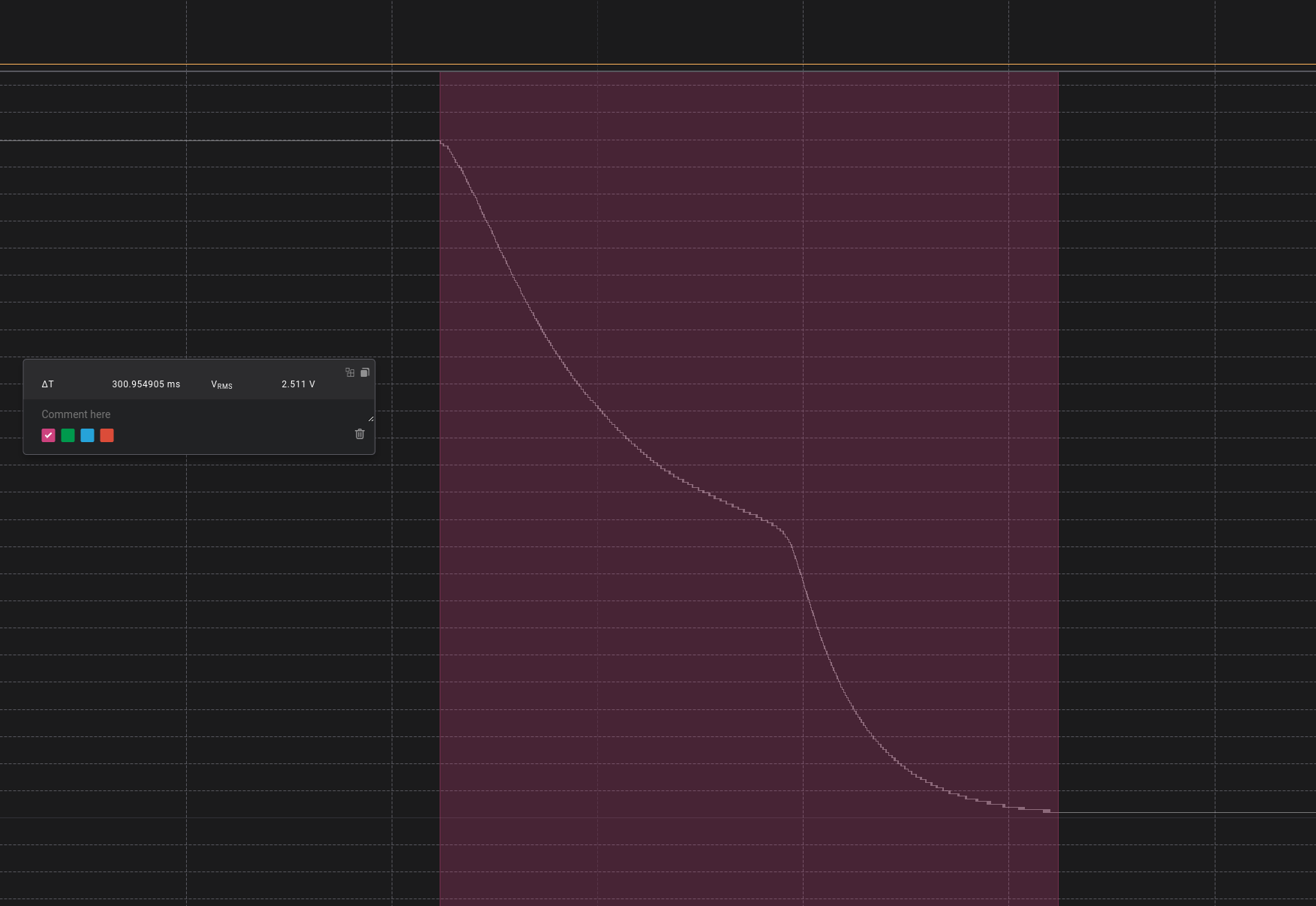lab notes: Jesverty SPS-3010N bench power supply
I’ve been wanting a bench power supply that is more flexible than the 5v and 12v power bricks I’ve been using. After some minimal research (specifically, this teardown on Youtube), I ordered a Jesrverty SPS-3010N for myself.
I can report that it is good enough! I was able to dial in 12V without much trouble.
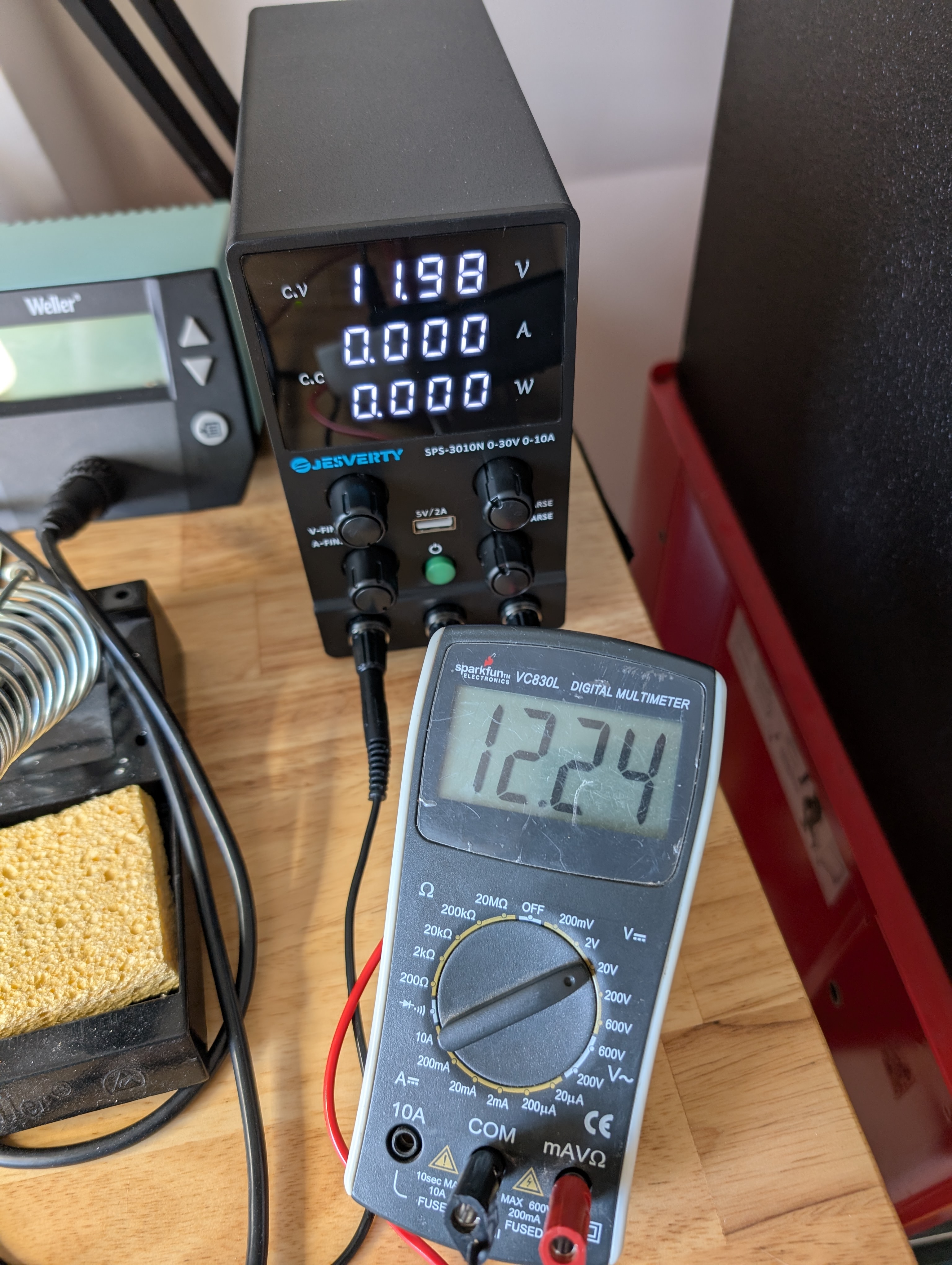
The voltage control knobs ara bit fiddly on the very low end, but I was able to get 1V w/ some effort. This is easier when the supply is loaded.
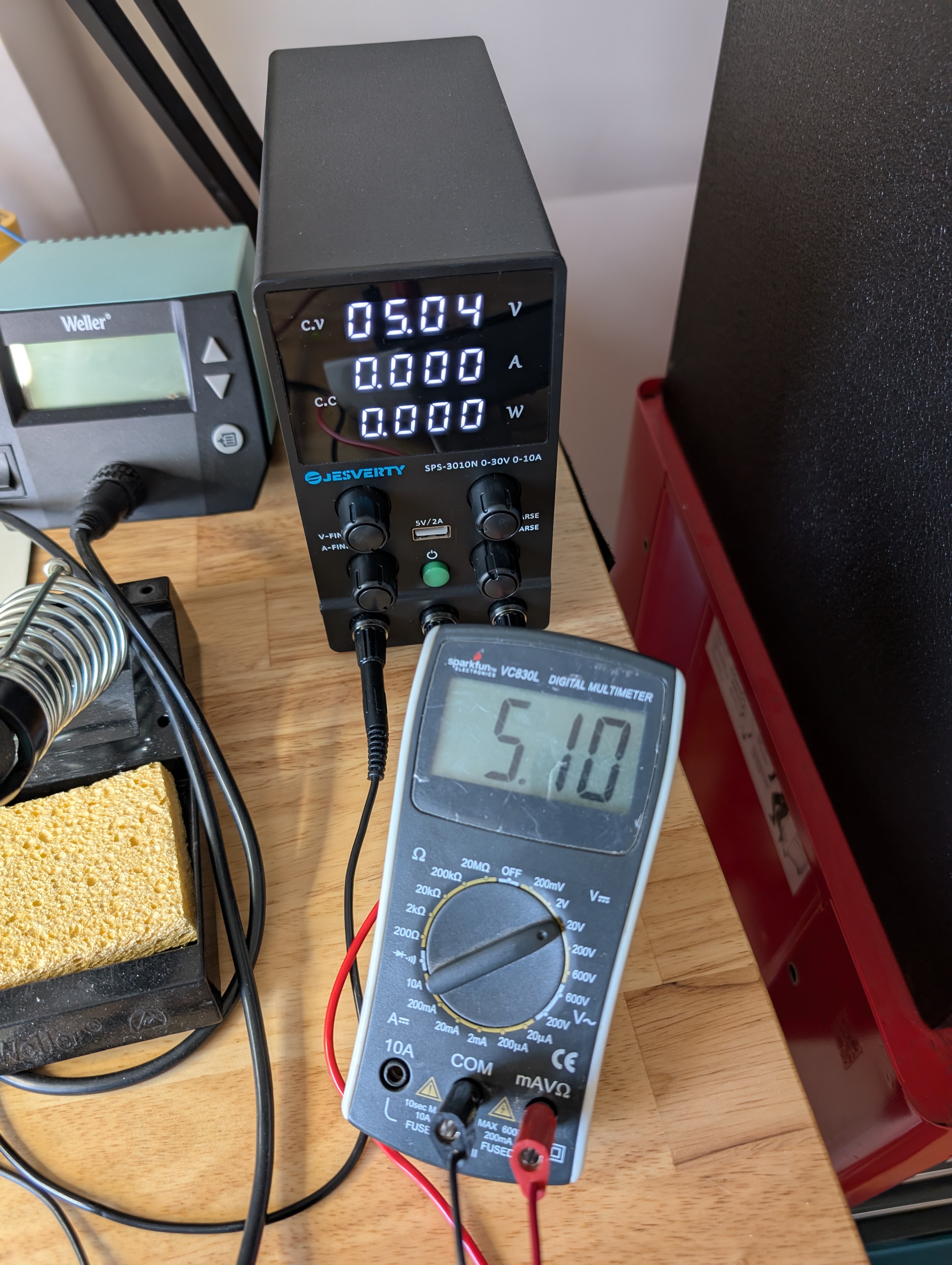
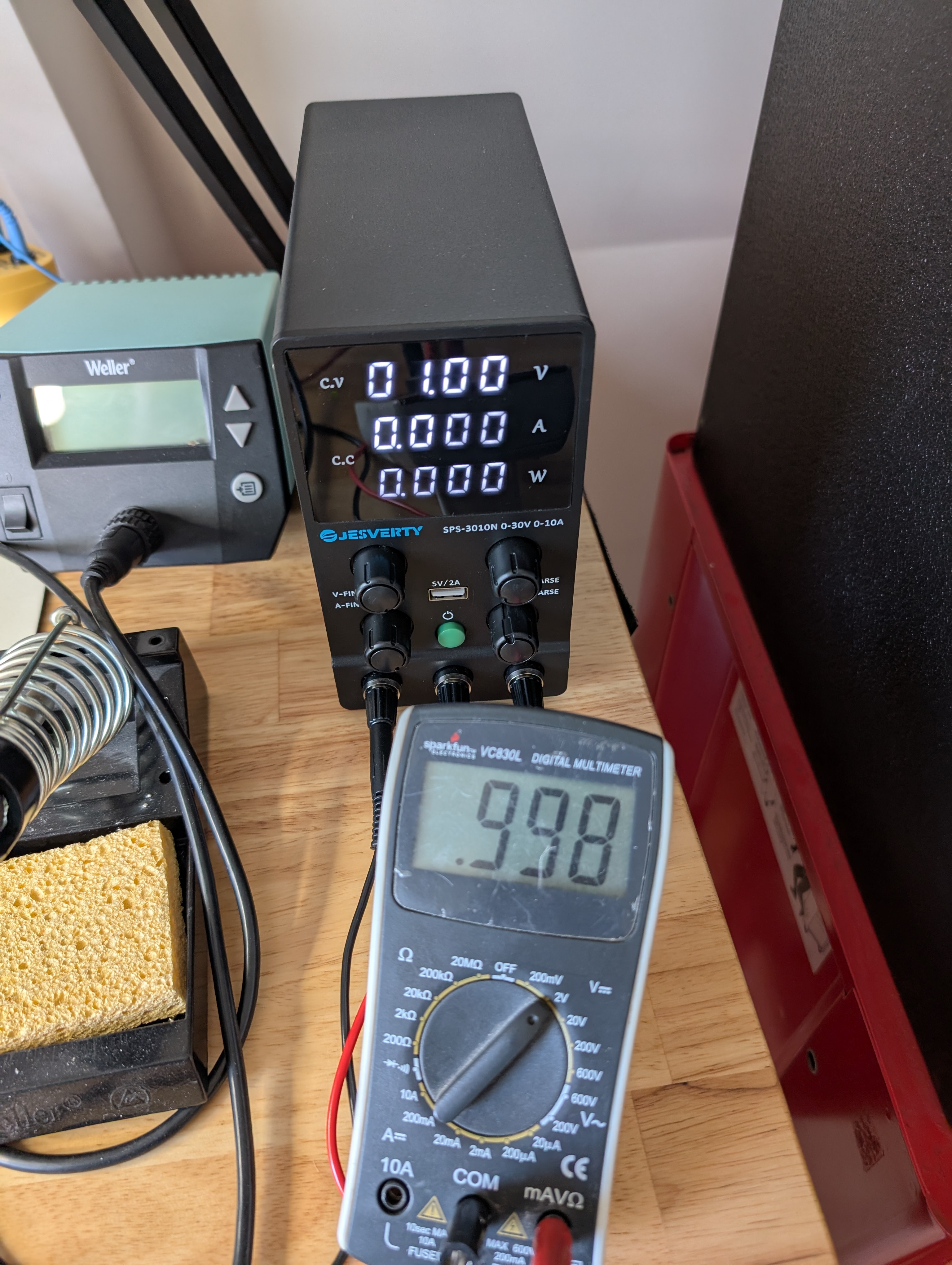
Below is one of the same kind of switches I used in my auxiliary power system in Jean-Luc, our camper van. Putting the supply to its first use, I confirmed the wiring of the pins on the switch.
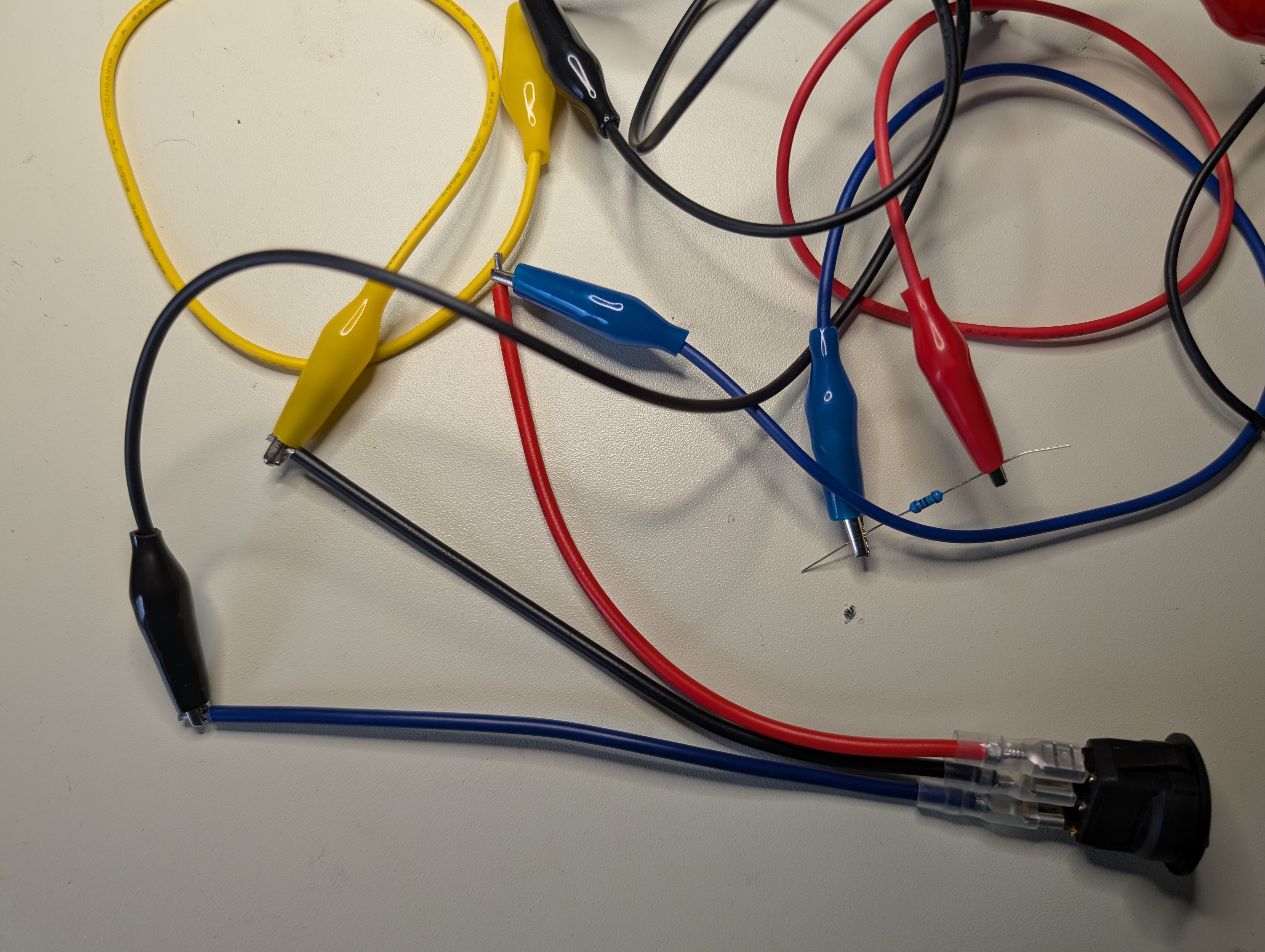
In this video I’m measuring the voltage drop across the LED in the switch. The supply shows the change in current and power, and the multimeter shows the voltage drop.
The only scope I have is a 4-input Saleae digital analyzer, which has a 6 MS/s analog input. At that sampling frequency there is no ripple.
I see a 350-450 mV glitch when the power button is first depressed, with the full voltage coming up 600-700 mS later. So always plan on about 1 second for the voltage to stabilize.
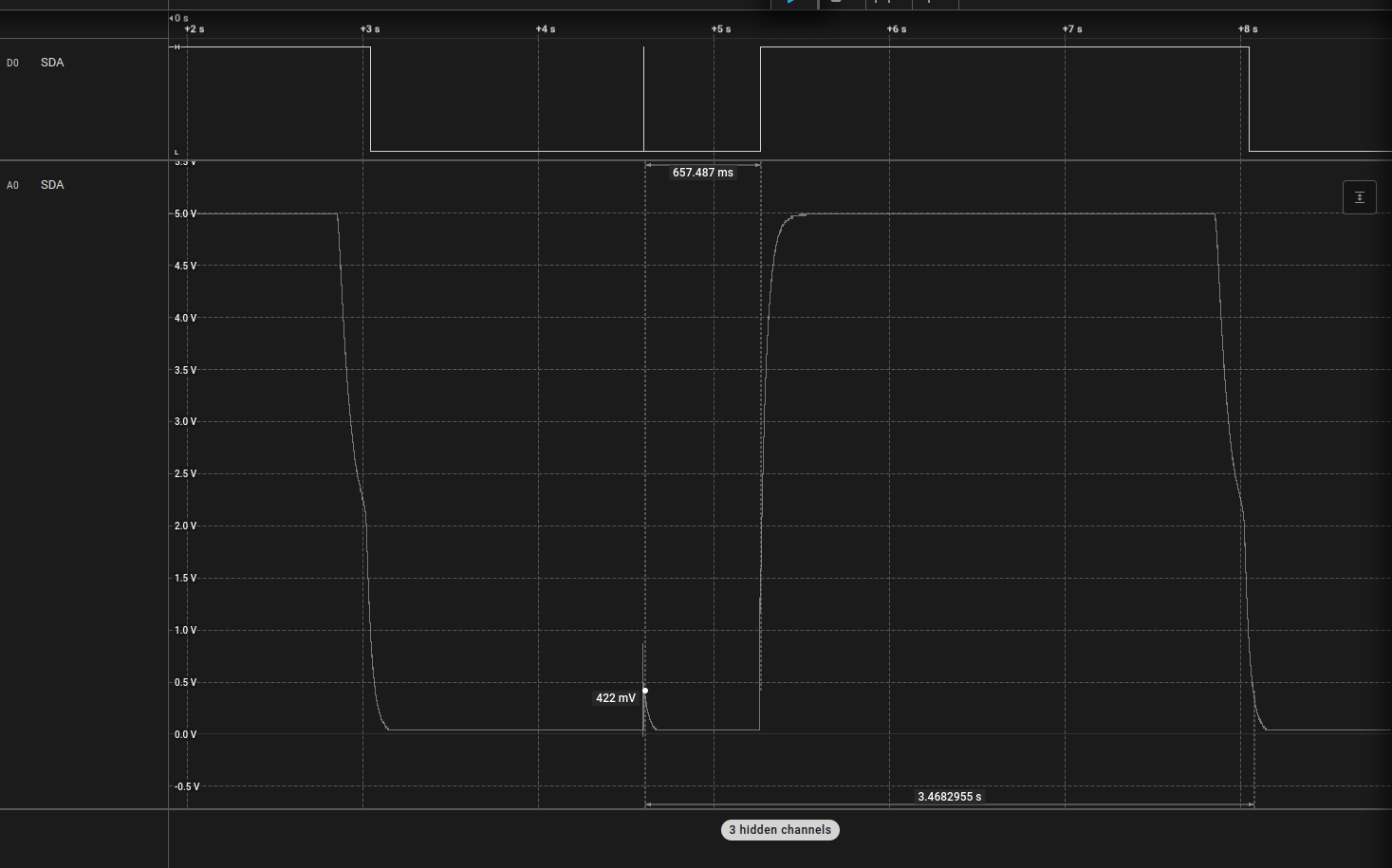
With a 6Ω load attached, the supply needed 300ms to reach zero volts when switched off.
